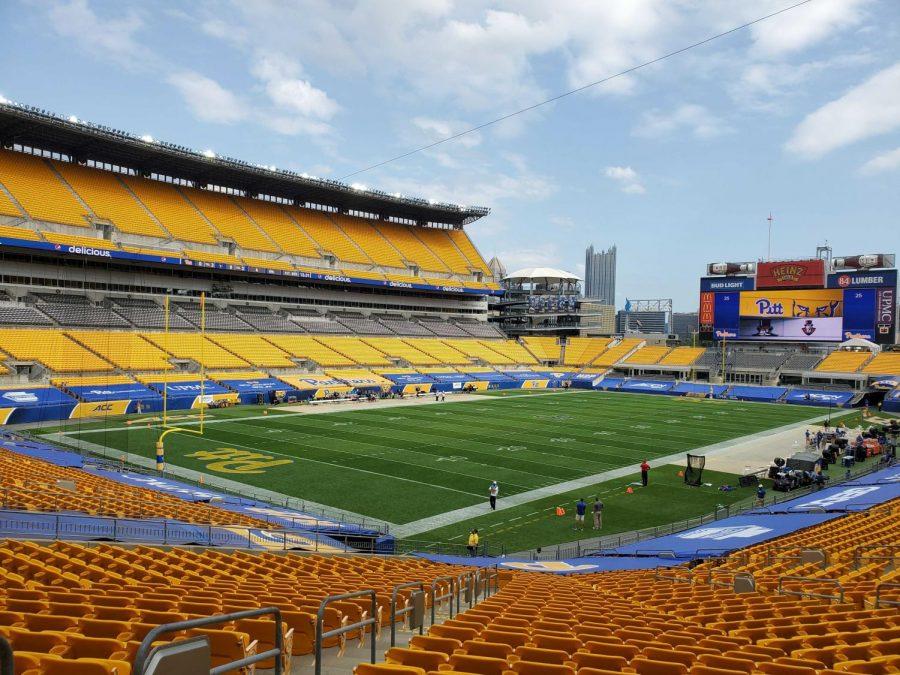Acrisure Stadium is a Pittsburgh skyline staple. Formerly Heinz Field, the venue boasts just as much history as it does Super Bowl rings. In a city with a great professional team — even if it’s currently not great — it makes sense to maximize space and have Pitt football share Acrisure Stadium with the Steelers.
Football, both pro and college, need stadiums that can hold their fan bases and give their team the best venue to play at. Acrisure Stadium also helps turn Steelers fans into Pitt fans and vice versa. As fans decked in black and yellow walk through the Great Hall, they will come across the blue and gold memorabilia showcasing Pitt football’s greatest accomplishments.
This transition from Panthers to Steelers is not a difficult one to manage. The colors of the stadium work great for either team. With yellow as a common denominator, the seat color is the perfect compromise.
Acrisure Stadium has it all — more than enough seating, plenty of parking lots for tailgating and overpriced game-day grub. What more can Pitt students want besides a closer location?
I will admit, a closer stadium sounds nice. The bus rides to and from the North Shore are not for the weak. But where would Pitt put their new stadium?
A South or North Oakland location would make the already limited housing available that much more limited. A Schenley Park location would take away the precious green space not readily available in the city. Besides, think of how huge a lot is needed to accommodate for all Acrisure offers.
The trek west to the North Shore also offers students a break from campus, where most eat, sleep and study. Going somewhere new every odd Saturday is an adventure in itself. Pitt also offers free transportation to and from the game. Therefore, a new stadium lifts no financial burden on students.
Building an entirely new stadium also comes with a hefty price tag of its own. Acrisure, constructed in 1999, cost about $281 million. With already rising tuition costs, a new stadium will place a bigger weight on students’ pockets.
Pitt’s football team also benefits from playing on the same team as the Steelers. It acclimates them to the pro-football atmosphere. For those following in Pitt alum and Steelers quarterback Kenny Pickett’s footsteps, the change does not require moving stadiums.
My final argument is that the one thing Pitt does not need any more of is construction. Adding a stadium on top of the long list of renovations will make students feel like they are living in an active construction site — which many already feel.
Overall, the future does not seem bright for a football stadium owned and operated by Pitt. Stadiums don’t come cheap, and Pitt is not likely to pony up the cash needed.


